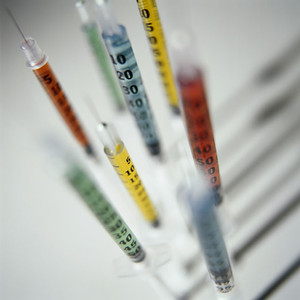Period: January to August 2012
Manufacturing of biosimilars is much more challenging than producing traditional small molecule generics. Reasons for this include, in the first place, the huge costs associated with manufacturing of biosimilars, along with the fact that the risk of failure for biosimilars is significantly higher than that for small molecule generics. Secondly, biosimilars are larger and more complex molecules to manufacture. Finally, minor changes in the manufacturing process can cause significant changes in efficacy or immunogenicity.
However, despite the huge risks there are also huge rewards to be made and many companies are jumping on the biosimilars wagon.
The constant challenge for biosimilar manufacturers is to prove similarity of their product to the originator drug. This requires more and more sophisticated analytical techniques in the manufacture and testing of biosimilars, especially when considering regulatory standards for evaluation.
This article discusses some of the research papers on manufacturing of biosimilars in the area of statistical methods and innovations that have been published during the period of January to August 2012, highlighting what the important subjects are in the field. Topics investigated by researchers included multivariate statistical methods for comparison of erythropoietins and the manufacturing innovation of integrating a perfusion bioreactor and a four-column periodic counter-current chromatography system.
Multivariate statistics
In a study by Taichrib et al. a method is presented for the differentiation of various erythropoietin preparations by capillary electrophoresis-mass spectrometry and the subsequent application of multivariate statistics.
Erythropoietin has a distinct natural heterogeneity arising from its glycosylation, which shows strong composition variations. This heterogeneity increases the complexity of the analysis of erythropoietin considerably, but may also be used to distinguish different preparations.
Relative peak areas of selected intact erythropoietin isoforms were used as variables in principal component analysis and hierarchical agglomerative clustering. Both methods were found to be suitable for differentiation of all erythropoietin preparations, including marketed products and pre-production preparations, which differ in the manufacturer, the production cell line, and the batch number. By this means, even closely related preparations were distinguished on the basis of the combined information on the antennarity, the sialoform, and the acetylation of the observed isoforms [1].
Manufacturing innovations
In a study by Warikoo et al. the first successful demonstration of the integration of a perfusion bioreactor and a four-column periodic counter-current chromatography (PCC) system for the continuous capture of candidate protein therapeutics is reported. Examples of a model of a stable protein (monoclonal antibody) and a model of a highly complex, less stable protein (recombinant human enzyme) are given [2].
The product quality observed for the continuous capture process was comparable to that for a batch-column operation. Furthermore, the integration of perfusion cell culture and PCC led to a dramatic decrease in the equipment footprint and elimination of several non-value-added unit operations, such as clarification and intermediate hold steps. These findings demonstrate the potential of integrated continuous bioprocessing as a universal platform for the manufacture of various kinds of therapeutic proteins. These innovations enable highly flexible and cost-effective manufacturing, essential in the current climate of growing competition from biosimilars.
The research into improving methods for analysing biosimilars shows the increased interest in the subject in recent years and is likely to increase as more biological drugs lose their patent protection in the coming years.
Related articles
Overview of research on US regulatory issues surrounding biosimilars in 2012
Overview of research on biosimilarity/comparability and interchangeability of biosimilars 2012
Overview of research on safety and immunogenicity of biosimilars in 2012
References
1. Taichrib A, Pioch M, Neusüß C. Multivariate statistics for the differentiation of erythropoietin preparations based on intact glycoforms determined by CE-MS. Anal Bioanal Chem. 2012;403(3):797-805.
2. Warikoo V, Godawat R, Brower K, et al. Integrated continuous production of recombinant therapeutic proteins. Biotechnol Bioeng. 2012 Dec;109(12):3018-29. doi: 10.1002/bit.24584.Epub 2012 Aug 6.
Permission granted to reproduce for personal and educational use only. All other reproduction, copy or reprinting of all or part of any ‘Content’ found on this website is strictly prohibited without the prior consent of the publisher. Contact the publisher to obtain permission before redistributing.








 0
0











Post your comment